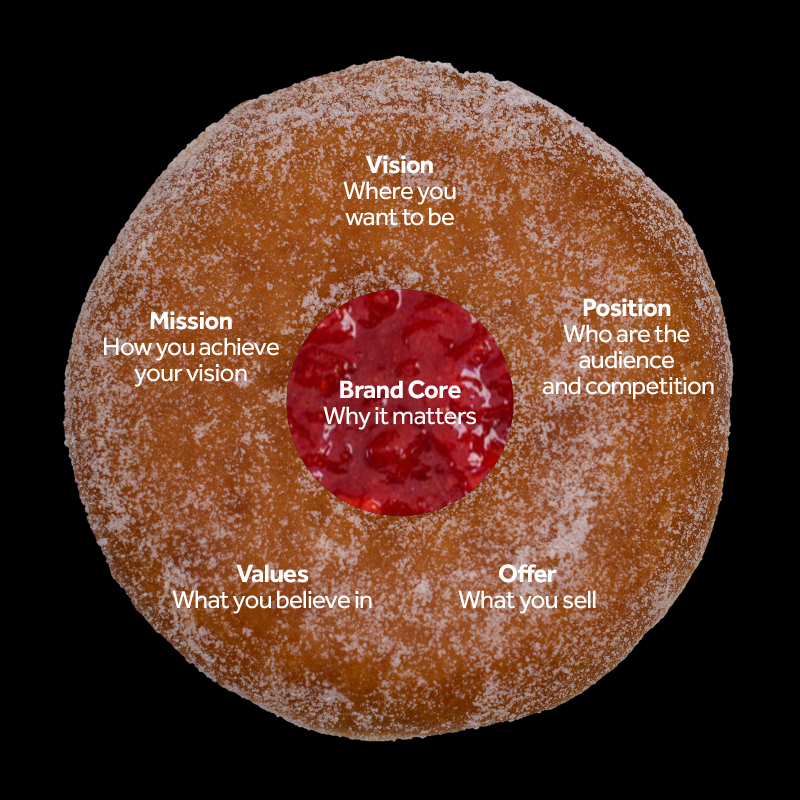What is a brand model? Why do you need one?

Do you use a brand model to define your brand? If so, what do you use? A brand house? A brand onion? A brand pyramid?
I use a brand doughnut. (Who doesn’t like doughnuts?)
If you don’t have a brand model then it’s harder to connect with your audience. It doesn’t matter what shape or size you go for just choose one or invent your own.
How to create and use a brand model.
The best way to define a brand is to create a brand model. But which is the right one? You could choose a “Brand Pyramid” with “What your brand stands for” at the base, building to a “Brand Core” at its peak. Or maybe you’d prefer a “Brand House” usually visualised as a classical building with pillars of “Values” displaying a “Brand Promise” on its roof. Or a “Brand Onion” layers of values and identity elements, with a central “Brand Core”.
What is the best brand model?
Actually, I don’t believe it matters which you choose. They’re all principally the same. Most have some form of vision, some values and crucially a core idea or promise. Choose one to suit your needs. I don’t use any of these listed above, instead opting for a “Brand Doughnut”. With a “Brand Core” filling the centre hole instead of jam.
Why do you need a brand model?
The brand model acts as a summary for the brand story, refining thoughts from research and insight. It becomes the starting point for all creative work, naming and messaging. It will form the cornerstone of any brand development activities. Think of it as the glue that creates an emotional connection with your audience. But remember, it’s not a business strategy! That’s left to management consultants.
Who is a brand model for?
Everyone. The brand model will work for all audiences inside and outside the organisation. Internally the brand model creates a shared direction and common understanding. Externally the brand model creates clarity and distinction in your brand and communications; a memorable experience for your customers.
How do you create a brand model?
Typically, this is through the combination of activities to gain greater insight into your business. I ask questions, read reports, look at what you’ve done in the past and generally understand who you are and where you want to be. I look at competitors and peers and understand what they are saying. I speak with employees, interview key stakeholders and generate digital surveys across the wider business. A successful model is created in collaboration with clients and their teams using workshops to explore ideas and test thinking, always sharing output along the way.
How do you use a brand model?
The brand model isn’t just ‘fluffy marketing jargon’. A brand model can give meaning to all areas of your business. You can splint an organisation into ‘Four P’s’. Products (the services provided to customers), Place (the environment in which you do business), Promotion (the marketing activities of your business) and finally People (the culture throughout the organisation). Aligning a strong “Brand Core” across these four areas will ensure that your brand story is more coherent, product development is more relevant, the sales process is smoother and your people buy-in to the brand at a deeper level.
Once you have all the ingredients for the brand model (such as vision, mission, offer, values, positioning, core) it’s time to build your house, skin your onion or enjoy a freshly made doughnut. Just remember, it’s what’s at the “Core” of your business that will make the big difference, not the choice of the model. But who doesn’t like jam doughnuts?
Download my brand doughnut guide showing you how to transform your brand by answering 6 questions
Tagged: #branding